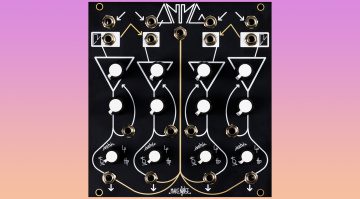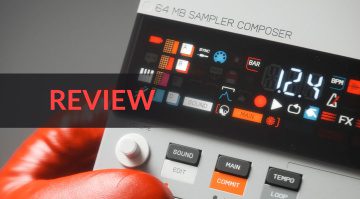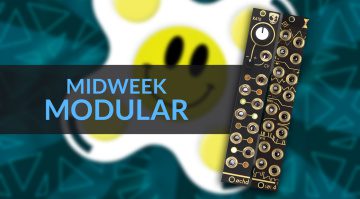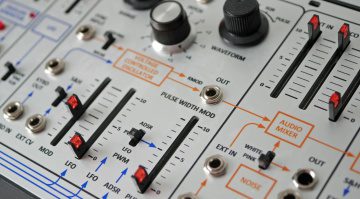Make Noise QMMG, Noise Engineering Dystorpia Pedal, Lost ARP 2500 Module & More: Synth Journal
Catch up on all of this week’s synth news that slipped through the cracks.
In this week’s Synth Journal, it’s the return of Make Noise QMMG, Noise Engineering’s new guitar pedal and… Blade Runner on a DX7!
Table of Contents
Make Noise QMMG
The quad multi-mode gate module is back, baby! Originally released in 2008, re-released in 2018 and now back again in limited quantities, the Make Noise QMMG is a “riff” (in Make Noise’s words) on the Buchla 292 Quad Lo-Pass Gate. The eight-vactrol-possessing Make Noise QMMG offers a HiPass mode, voltage controlled feedback, direct coupling and normalizations to create bandpass gates and HP, BP or LP filters.
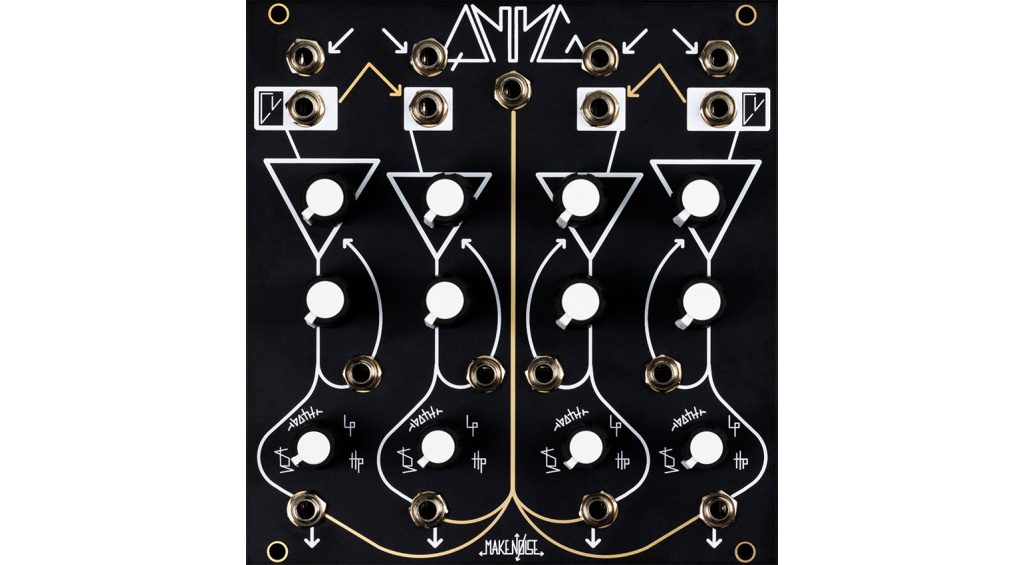
The special Make Noise QMMG 2024 Black & Gold Edition will be available in limited quantities only because of component scarcity. As with the 2018 reissue, the mode switching is handled by analog pots rather than rotary switches, and the bottom board contains reverse power protection circuitry.
Make Noise QMMG 2024 Black & Gold Edition will be available for purchase on September 9 for $699. If you’re in the Asheville, North Carolina area from 10 am to 2 pm on September 7, you can pick one up yourself at Make Noise HQ.

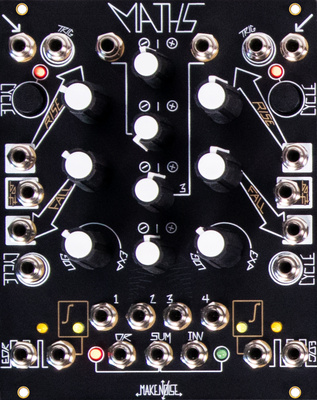

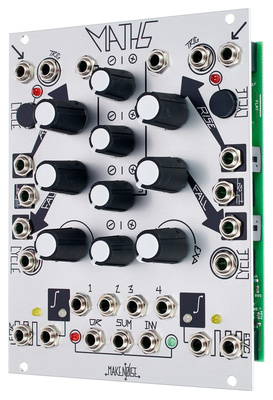
- Make Noise QMMG product page
Noise Engineering Dystorpia
Noise Engineering has joined Eurorack module manufacturers like ALM, Endorphin.es and Dreadbox and started making guitar pedals. Of course, you don’t have to use it with a guitar – a synth is just fine too. And so we get Noise Engineering’s Dystorpia, a “unique take on digital distortion and drive,” in the company’s words

The pedal sports three different distortion parameters. There’s Gain, which sets the input level going into the pedal and can be overdriven. Fold manhandles a wavefolding algorithm while Pura adds a full-wave rectifier to the mix. The Blend knob can also provide some slight saturation all on its own. There’s also an expression-controllable Tone parameter, a noise gate, suboctaves via the DOOM switch (someone call Sunn O)))) and a freeze function.
Noise Engineering Dystorpia is now available for an MSRP of $399.
- Noise Engineering home page
AMSynths AM1035 Triple Modulator
AMSynths has been busy working on a series of 10 Eurorack modules based on ARP 2500 prototype modules. Designed to complement Behringer’s 2500 series modules, the AMSynths units reflect projected modules from 1970 that never made it into production.
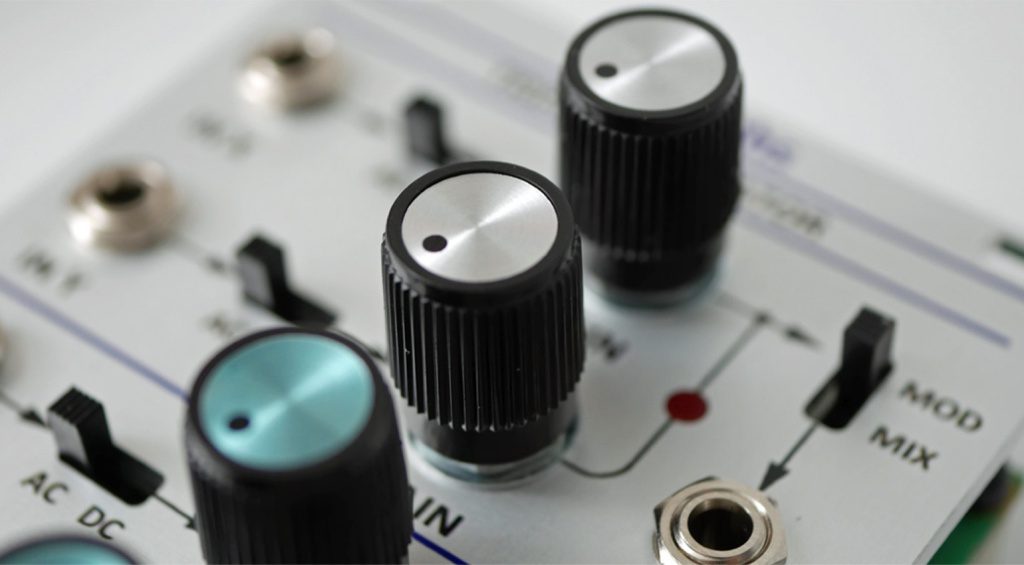
The AM1035 Triple Modulator features three discrete, four-quadrant modulators that provide ring modulation, mixing and VCA capabilities. “Each of the three channels is based on the discrete transistor circuit (4014) from the 1005 module,” says AMSynths on its home page. “The two independent inputs (X and Y) can be DC or AC coupled and are passed into the multiplier, with each input having a LEVEL control.”
AMSynths AM1035 Triple Modulator is available now for £149.
- AMSynths AM1035 Triple Modulator product page
Microrack Wants to Create an Affordable Modular Platform
Although Eurorack is certainly more affordable than legacy modular systems like Moog or Buchla, it can still be expensive. Enter Microrack, a new company that wants to make modular affordable, accessible and portable.
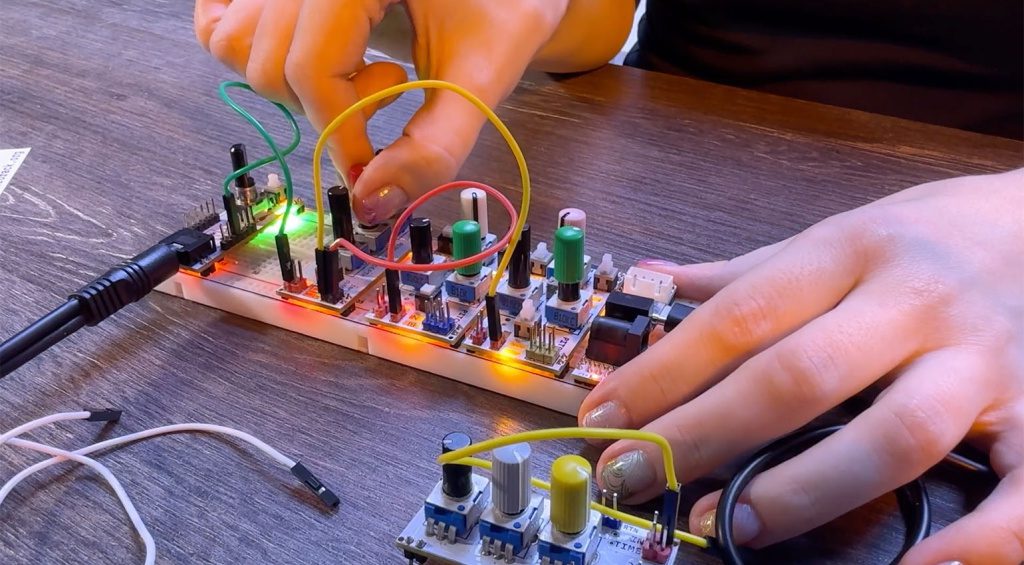
Now on Kickstarter, Microrack features a selection of mostly analog modules that slot right into breadboards. Modules are available in a variety of packages and include the usual suspects like VCOs, LFOs, filters and envelopes. You can control them with MIDI and power the rack via USB-C. Microrack can also be Eurorack-compatible.
There are a variety of packages available, from a starter synth to a complete module package and even one to use as an effects processor. Prices start at $39 and go up from there, with the full kit costing $399.
As of the time of publishing, there was a month left in the campaign and it had already surpassed its initial goals.
- Microrack Kickstarter page
Vaemi Keychain Holder
Forget about synthesizers for a minute (it’s hard, I know). Let’s talk instead about keys. Like house keys, car keys. Do you lose them often? I mean, I don’t but people do. Or maybe you need a better place to keep them than a random cereal bowl on a table by the door. Even better if the key holder could somehow be synthesizer-related.
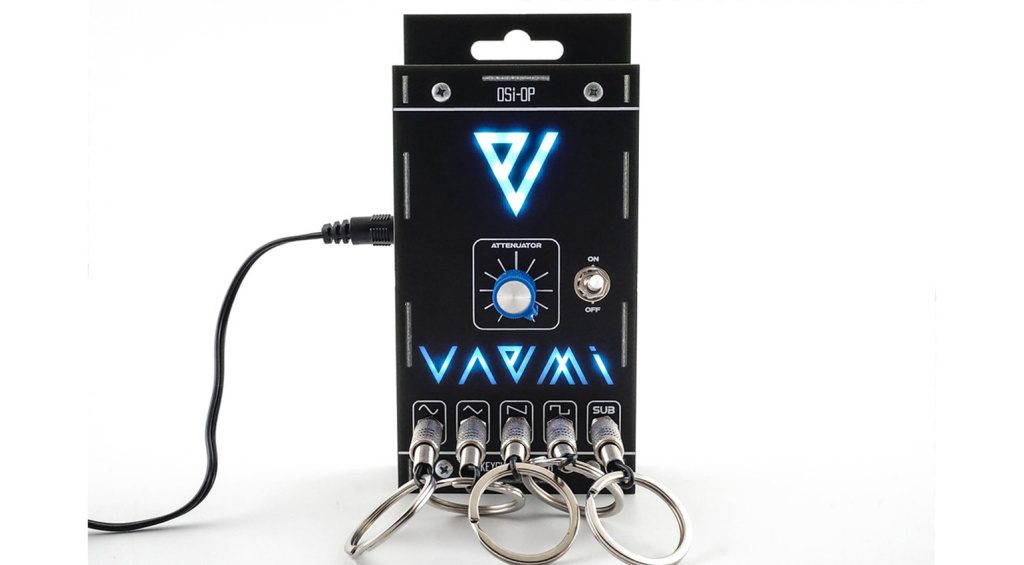
You’re in luck. Euorack module manufacturer Vaimo has made a keychain holder. Called Keychain Holder with capital letters, it looks like a Eurorack module except one that you hang on your wall. Based on the company’s own OSI-OP oscillator design, it features five jacks that look like they might output waveforms but actually just hold keychains.
In the center is an attenuator, which controls the brightness of the Keychain Holder’s various lights, including the center logo (always lit) and the individual letters that make up VAEMI, which glow when you insert a jack keychain. There’s also an on/off switch. Note that you’ll need a 12-volt adapter to power it (sadly not included).
Vaemi Keychain Holder is available now as a DIY kit for $75 or assembled for $119.
- Vaemi Keychain Holder product page
Blade Runner on a DX7
Most people don’t think of FM synthesis as warm. In fact, it has a reputation for being downright cold. Think crystalline keys and glassy pads. FM doesn’t have to be chilly though, as evidenced in this great video from musician Benjamin Dehli.
An experiment to see if he could make the DX7 sound like a CS-80, it shows Dehli playing the “Main Titles” from Blade Runner, as made famous by the late Vangelis.
“The Yamaha CS-80 and Yamaha DX7 are probably polar opposites in both operation and sound,” he said in the video description. “The CS-80 is an analog subtractive synthesizer, whereas the DX7 is a digital synthesizer that uses frequency modulation (FM) synthesis. The only thing they really have in common is the Yamaha brand name.”
I think he did a pretty good job. It may not sound exactly like a CS-80 (few synths do) but it has a nice lushness that is very cinematic.
Dehli is reportedly working on a full DX7 cartridge of patches. Visit his store for more information.
- Benjamin Dehli’s store
More Information
- All about synthesizers
- All about Eurorack

 3,7 / 5,0 |
3,7 / 5,0 | 


